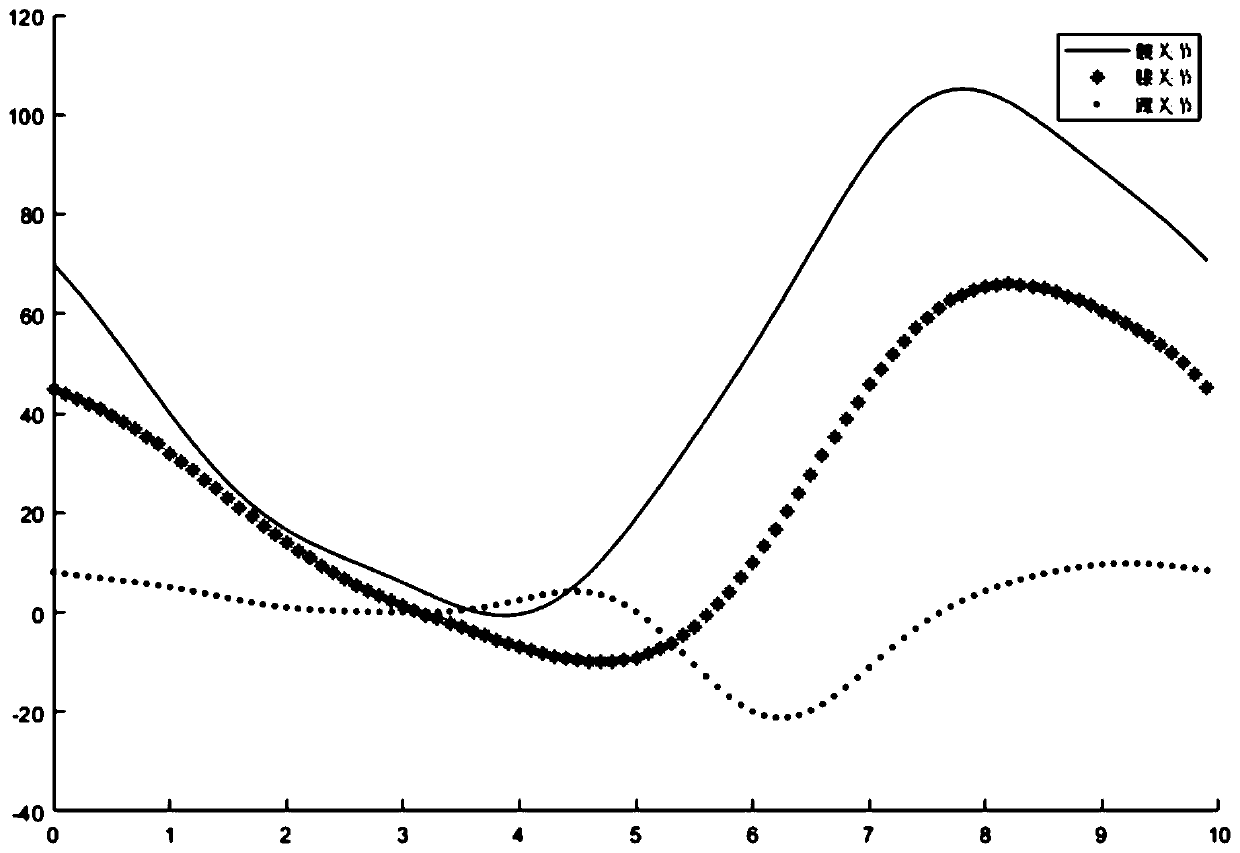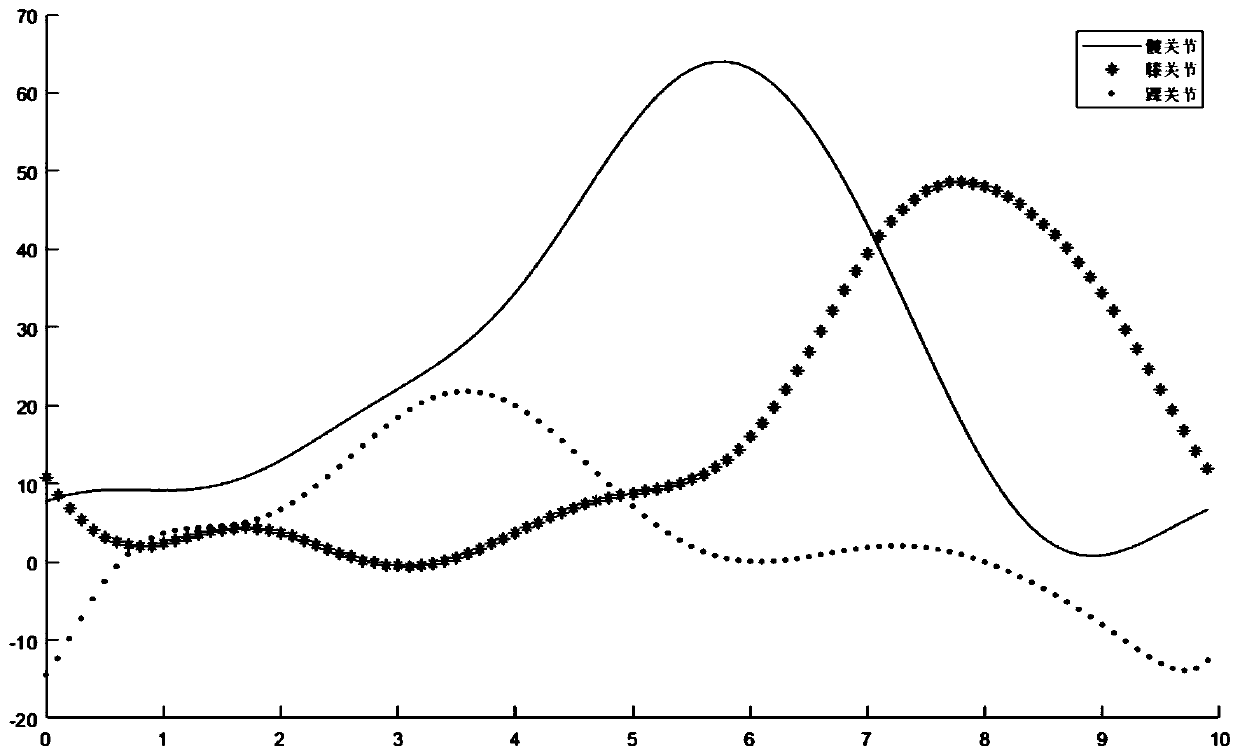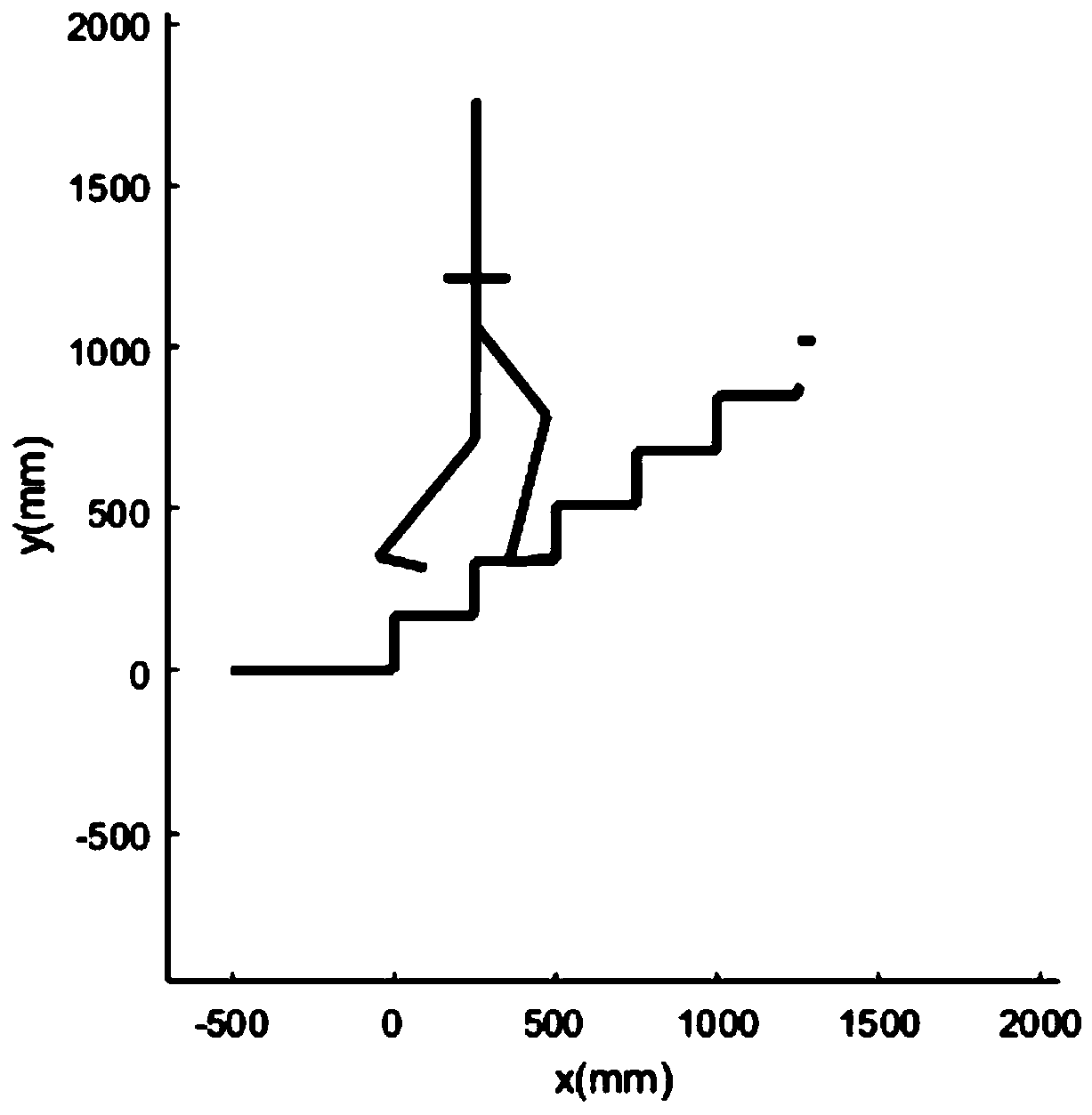Rehabilitation training method for simulating going upstairs and downstairs and lower limb rehabilitation robot
A rehabilitation robot and rehabilitation training technology, applied in passive exercise equipment, physical therapy and other directions, can solve problems such as single mode, achieve the effect of high fidelity, high fidelity, and increase diversity
- Summary
- Abstract
- Description
- Claims
- Application Information
AI Technical Summary
Problems solved by technology
Method used
Image
Examples
Embodiment 1
[0029] This embodiment discloses a rehabilitation training method for simulating going up and down stairs. It consists of two mechanical legs fixed relatively to human legs and drives the human legs to move to simulate the movement of human legs when going up and down stairs. The movement of the mechanical legs is based on the movement of the legs. The model is carried out; while the human legs are moving, the backboard is relatively fixed to the human body and moves the human body up and down to simulate the change of the center of gravity of the human body when going up and down stairs.
[0030] Because only the movement of human legs cannot accurately simulate the movement state when going up and down stairs, adding the adjustment of the center of gravity of the human body in the simulation will make the simulation of going up and down stairs more realistic and help patients recover. Aiming at the limited vertical movement of the current lower limb rehabilitation robot, a dy...
Embodiment 2
[0044] see Figure 7 , this embodiment discloses a lower limb rehabilitation robot for implementing the rehabilitation training method for simulating up and down stairs described in Embodiment 1, which includes a base, a support frame, a control module, a driver, a backboard and two mechanical legs. The control module is not shown in the drawings.
[0045] The support frame is fixed on the base, and the backboard and the support frame are connected through slide rails so that they can move in the vertical direction. The driver includes a ball screw and a drive motor, the ball screw is connected to the back plate, and the drive motor is fixed on the support frame. The drive motor is used to drive the ball screw to do linear motion, and the drive motor will indirectly drive the back plate to move up and down through the ball screw when the drive motor is running.
PUM
 Login to View More
Login to View More Abstract
Description
Claims
Application Information
 Login to View More
Login to View More - R&D
- Intellectual Property
- Life Sciences
- Materials
- Tech Scout
- Unparalleled Data Quality
- Higher Quality Content
- 60% Fewer Hallucinations
Browse by: Latest US Patents, China's latest patents, Technical Efficacy Thesaurus, Application Domain, Technology Topic, Popular Technical Reports.
© 2025 PatSnap. All rights reserved.Legal|Privacy policy|Modern Slavery Act Transparency Statement|Sitemap|About US| Contact US: help@patsnap.com



